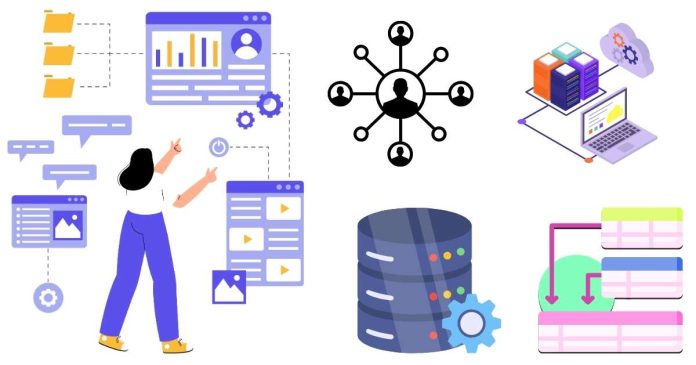The relational model is a foundational concept in database management systems (DBMS) that organizes data into structured tables, also called relations. This model, introduced by Edgar F. Codd in 1970, is widely used due to its simplicity, flexibility, and powerful theoretical foundation. Relational databases, such as MySQL, PostgreSQL, and Oracle Database, are built on this model.
Key Concepts of the Relational Model
1. Relation (Table)
A relation is a two-dimensional table that contains rows and columns:
- Rows (Tuples): Each row represents a unique record in the table.
- Columns (Attributes): Each column represents a property or field of the records.
For example, a “Student” table:
| StudentID | Name | Age | Major |
|---|---|---|---|
| 1 | Alice | 20 | Computer Science |
| 2 | Bob | 22 | Mathematics |
| 3 | Carol | 19 | Physics |
2. Attributes and Domains
- Attributes are the column names of a table, such as
StudentIDorName. - Domains are the valid set of values an attribute can hold. For example, the domain of
Agemight be all positive integers.
3. Primary Key
A primary key is a unique identifier for each row in a table. It ensures that no two rows can have the same value for the key attribute(s). In the “Student” table, StudentID can serve as the primary key.
4. Foreign Key
A foreign key is an attribute in one table that refers to the primary key of another table. This establishes relationships between tables.
For example, if there is an “Enrollment” table:
| EnrollmentID | StudentID | CourseID |
|---|---|---|
| 1 | 1 | CS101 |
| 2 | 2 | MA201 |
Here, StudentID in the “Enrollment” table is a foreign key referring to the StudentID in the “Student” table.
5. Schema
A schema defines the structure of a database, including the tables, their attributes, and the relationships between them.
Features of the Relational Model
- Data Independence
- Logical and physical data are independent, allowing for easier modifications without affecting the overall database.
- Integrity Constraints
- The relational model enforces constraints, such as primary keys, foreign keys, and rules like “not null,” to maintain data accuracy and consistency.
- Simplicity
- Data is stored in tabular form, which is easy to understand and use.
- SQL Support
- Most relational databases use SQL (Structured Query Language) to query and manipulate data.Advantages of the Relational Model
- Flexibility: Easy to add or modify data and tables.
- Data Integrity: Enforces rules to maintain accurate relationships and valid data.
- Scalability: Handles large volumes of data efficiently.
- Ease of Use: Simple table format makes it user-friendly.
Limitations of the Relational Model
- Complexity with Large Datasets: For very large datasets or complex relationships, performance can degrade.
- Not Ideal for Unstructured Data: It is less suited for handling unstructured data like multimedia files or documents.
Real-World Applications
Relational databases are widely used in industries like:
- Finance: To store transaction records.
- Healthcare: For managing patient information.
- E-commerce: To track products, orders, and customers.
The relational model in DBMS is a powerful and versatile approach to organizing and managing data. Its use of tables, keys, and relationships provides a clear and structured way to handle complex datasets, making it a cornerstone of modern database management systems. Understanding the relational model is crucial for building robust and efficient database solutions.


